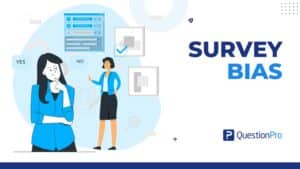
A key component of human resource management is employer evaluation, which entails evaluating how well a firm performs as an employer.
To assess the employer’s performance in communication, leadership, work environment, remuneration and benefits, and overall employee satisfaction, input from employees and other stakeholders is gathered.
It takes careful planning and execution to conduct an employer evaluation and get relevant, accurate, and usable feedback. This blog will cover various topics, including how to conduct an efficient employer review.
LEARN ABOUT: Retention Rate
What is employer evaluation?
Assessing an employer’s or an organization’s efficacy and performance is known as employer evaluation. To evaluate the employer’s performance, input from employees, clients, and other stakeholders is often gathered.
Specific focus areas include management style, communication, employee relations, and work environment. Employer evaluation seeks to pinpoint areas of strength and weakness to create plans for enhancing performance and satisfying the demands of all stakeholders.
Either the organization itself or an outside evaluator may carry out the evaluation. Employer evaluation is a crucial tool to encourage openness, responsibility, and ongoing progress at work.
Importance of employer evaluation
Employer evaluation is important for several reasons:
- Performance improvement
Evaluating a company’s performance helps to find its strengths and weaknesses and gives a starting point for making plans to improve performance and meet the needs of stakeholders.
- Transparency and accountability
Evaluation encourages transparency and accountability in the workplace by giving workers, customers, and other stakeholders a clear picture of how an employer is doing.
- Employee engagement and retention
Regular evaluations and feedback keep employees interested in and dedicated to their work, which can lead to more job satisfaction, better performance, and less turnover.
- Legal compliance
Evaluation can help organizations meet legal requirements related to performance management, like equal job opportunities and anti-discrimination laws.
- Competitive advantage
Employers who consistently do a good job and meet the needs of their stakeholders can gain a competitive edge in the market by attracting and keeping the best employees and customers.
Employer evaluation is important for improving performance, being open, and holding people accountable at work. It can also help the business succeed in the long run.
How to do an employer evaluation
An essential procedure, employer evaluation, entails evaluating the efficiency and performance of an employer. To do a successful employer evaluation, follow these steps:
- Identify evaluation criteria
Establish the key performance indicators (KPIs) that will be utilized to gauge the company’s performance, such as employee happiness, productivity, retention rate, and profitability.
- Collect data
Obtain information about the employer’s performance from employees, clients, and other stakeholders through surveys, interviews, focus groups, and other methods.
- Analyze data
Analyze the data to find trends, patterns, and the performance of the employer’s strengths and shortcomings. Use data visualization tools, such as graphs, charts, and tables.
- Provide feedback
Give the employer your assessment of their performance, emphasizing their strengths and development areas. Give specific illustrations and advice on how to do better.
- Set goals and develop action plans
Set objectives and create action plans based on the evaluation results to address the areas that need improvement. Assign responsibilities and deadlines for putting the action plans into action.
- Monitor progress
Continually assess the employer’s performance and track the actions taken in accordance with the action plans. Ensure that the employer is moving closer to their objectives by making modifications as necessary.
- Communicate results
Communicate the evaluation findings and the proposed course of action with all relevant parties, including the employer, managers, and employees. Use the results to decide on hiring, wage hikes, and other employment-related decisions.
Employer evaluation is a continuous process that requires constant monitoring, feedback, and improvement to ensure the employer meets the needs of its workers and stakeholders.
Advantages of employer evaluation
Let’s find out the advantages of employer evaluation:
- Improved performance: When a company evaluates employees, it can find their strengths and weaknesses. This helps them develop plans to improve performance and meet the needs of stakeholders.
- Transparency and accountability: Employer evaluation encourages transparency and accountability at work by giving workers, customers, and other stakeholders a clear picture of the employer’s position.
- Increased employee engagement and retention: Regular evaluations and feedback help keep workers engaged and committed to their work, leading to more job satisfaction, better performance, and less turnover.
- Legal compliance: Employer evaluation can help companies meet legal requirements for performance management, such as anti-discrimination and equal job opportunity laws.
- Competitive advantage: An employer who regularly does a good job and meets the needs of its stakeholders can gain a competitive edge in the market by attracting and keeping top talent and customers.
- Better decision-making: Employer evaluation gives important facts and information that can help with decisions about promotions, salary increases, and other work-related issues.
Disadvantages of employer evaluation
Along with advantages, everything has disadvantages as well. Find out some of the drawbacks:
- Subjectivity: Evaluating an employer can be subjective because it depends on the thoughts and feelings of different people, who may have different ideas about how well the employer is doing.
- Bias: Evaluators may have personal preferences that can affect how they judge an employer’s work.
- Inaccuracy: If the evaluation standards are evident or the measurement methods need to be better, the evaluation results could be right or mislead people.
- Time-consuming: Evaluating a job can take a lot of time because it takes a lot of resources and work to gather and analyze data.
- Resistance: Some companies may want to avoid being evaluated or make changes based on the results of an evaluation.
- Demotivation: Employees may lose motivation or interest in their work if they think the review process needs to be more fair or punitive.
How can QuestionPro workforce help an employer evaluation?
QuestionPro Workforce is a complete platform for employee engagement that can help with different parts of evaluating a company. QuestionPro Workforce can help in the following ways:
- Feedback from employees: With QuestionPro Workforce, you can use surveys and pulse polls to get employee feedback. This can help you figure out what they think about the employer’s leadership, communication, work setting, and benefits, among other things.
- Performance Evaluation: QuestionPro Workforce has tools for setting performance goals, keeping track of work, and evaluating performance. This can help find places where workers can improve and give them feedback.
- 360 degree feedback: QuestionPro Workforce lets you get feedback from managers, coworkers, and subordinates, among other people. This can give a complete picture of an employee’s success and aid in locating areas that need development.
LEARN ABOUT: 360 Leadership Assessment
- Learning and development: QuestionPro Workforce has tools for making and providing training programs to help employees improve their skills and performance.
- Reward and recognition: QuestionPro Workforce has tools that can be used to recognize and reward employee achievement. This can get employees more interested and motivated.
- Analytics and reporting: QuestionPro Workforce gives you analytics and reports in real-time, so you can track how engaged and productive your employees are over time. This can help find trends and places to make changes.
QuestionPro Workforce is a helpful tool that can be used for employer evaluation. It gives a complete tool for getting feedback, keeping track of performance, and getting employees more involved, which can help make the workplace more open and accountable.







